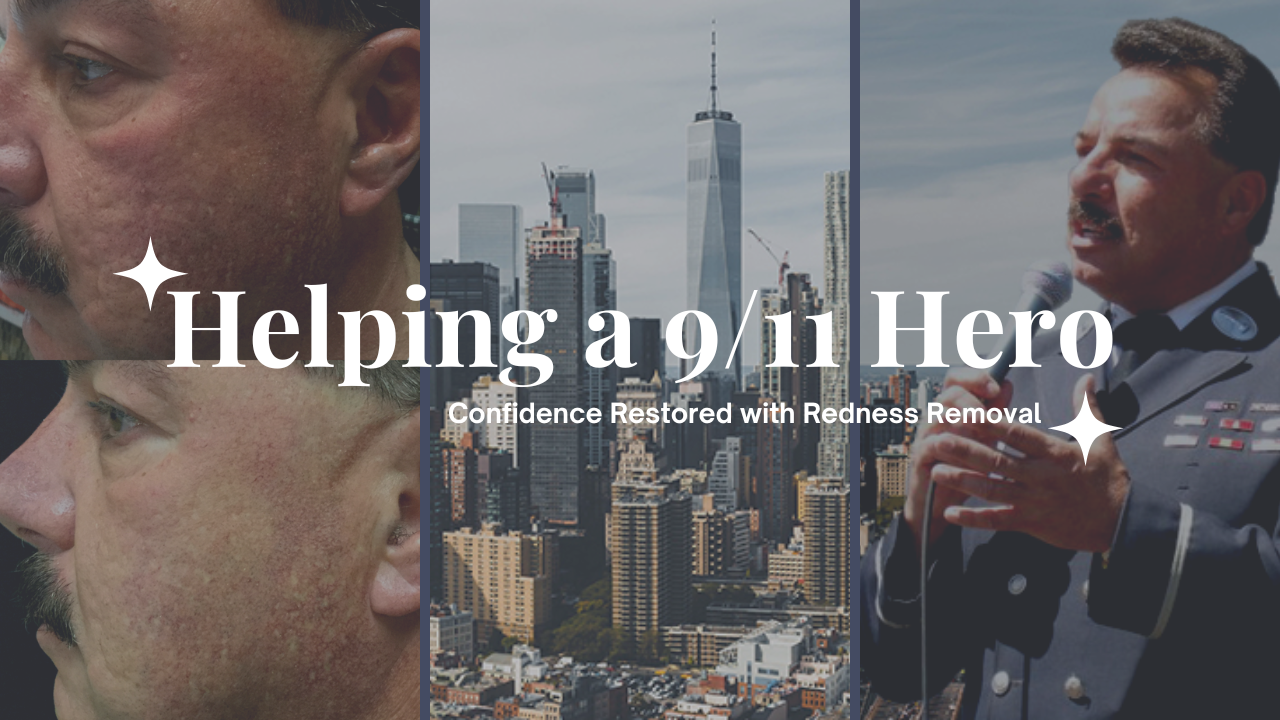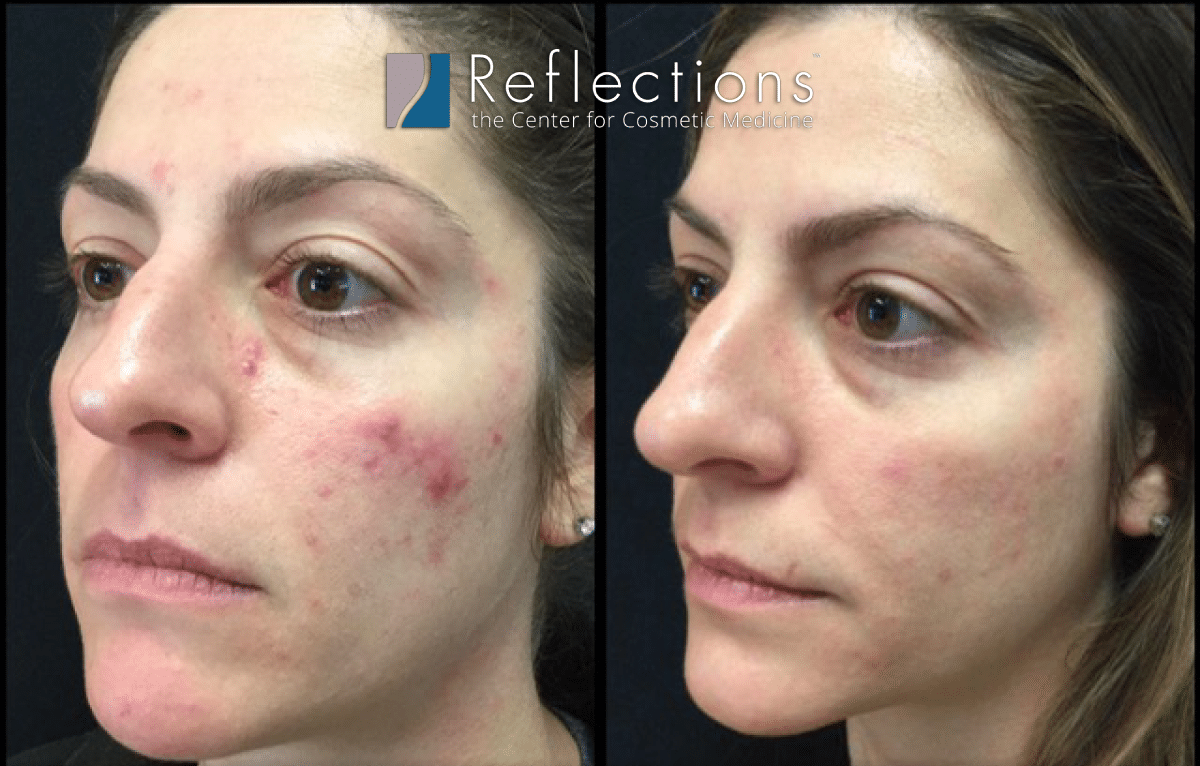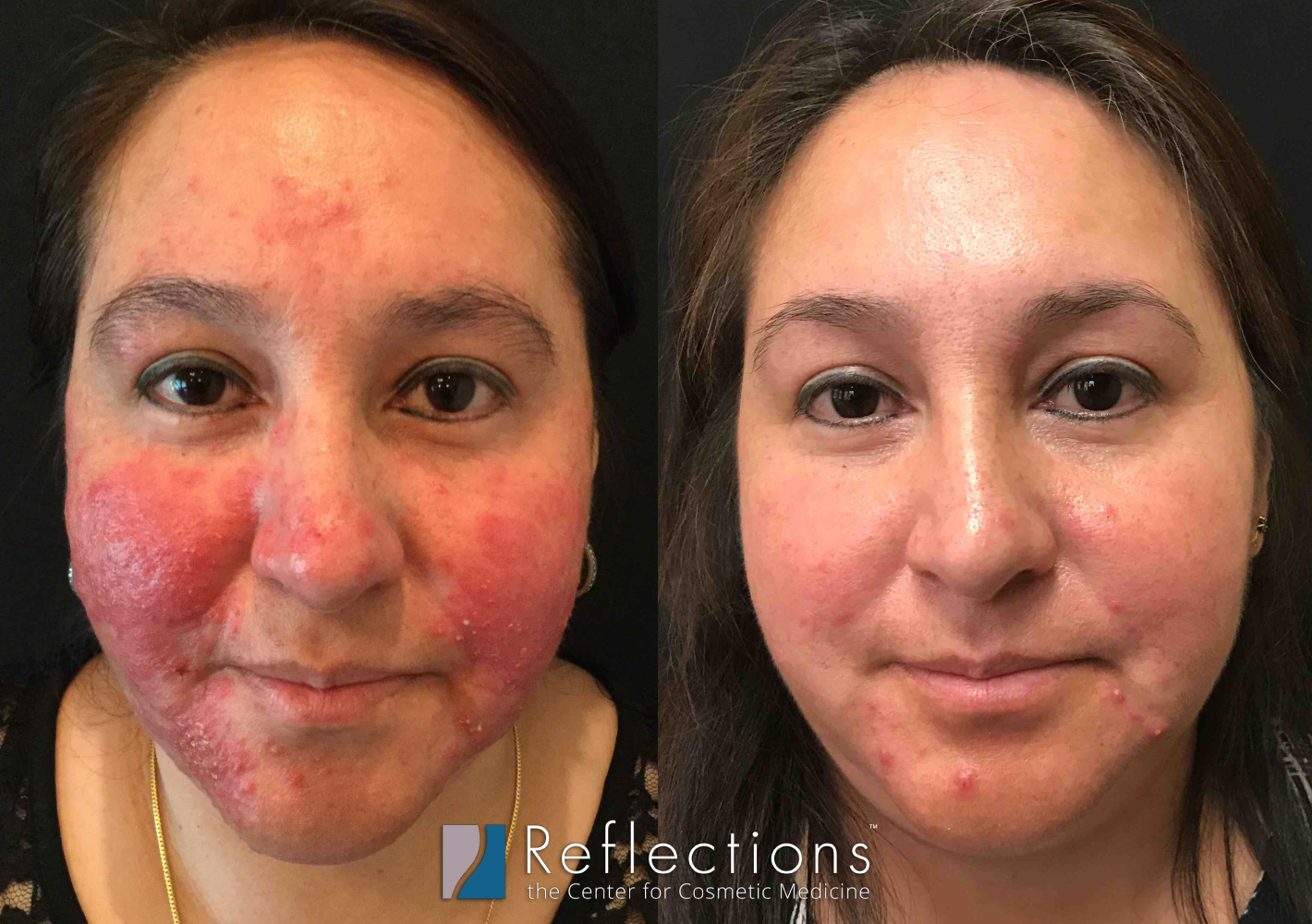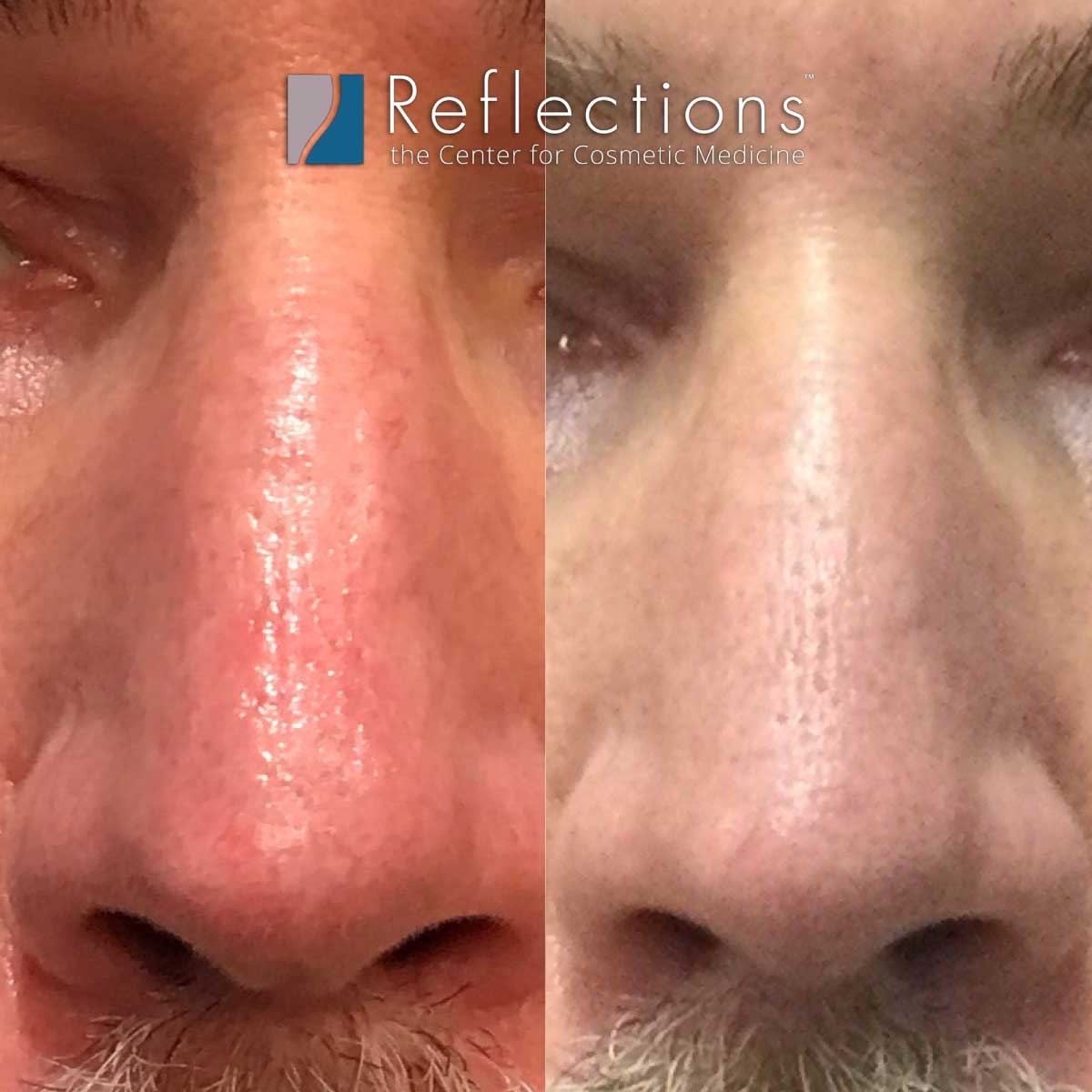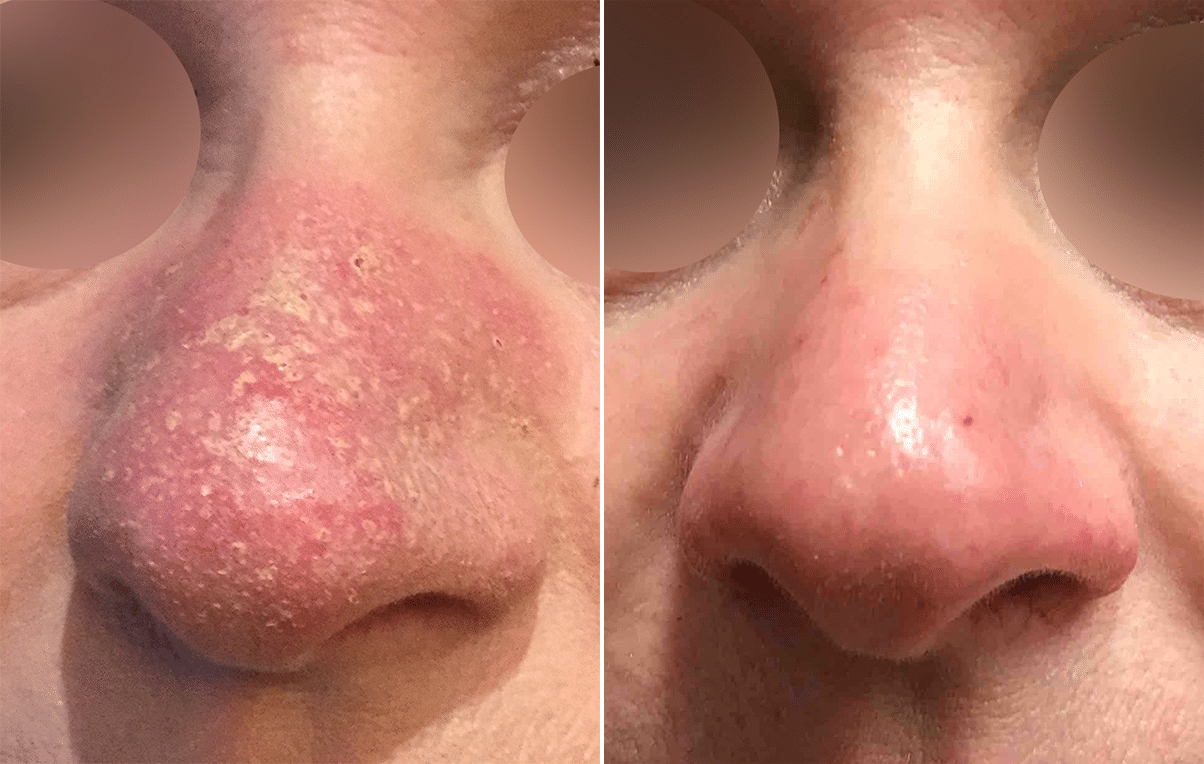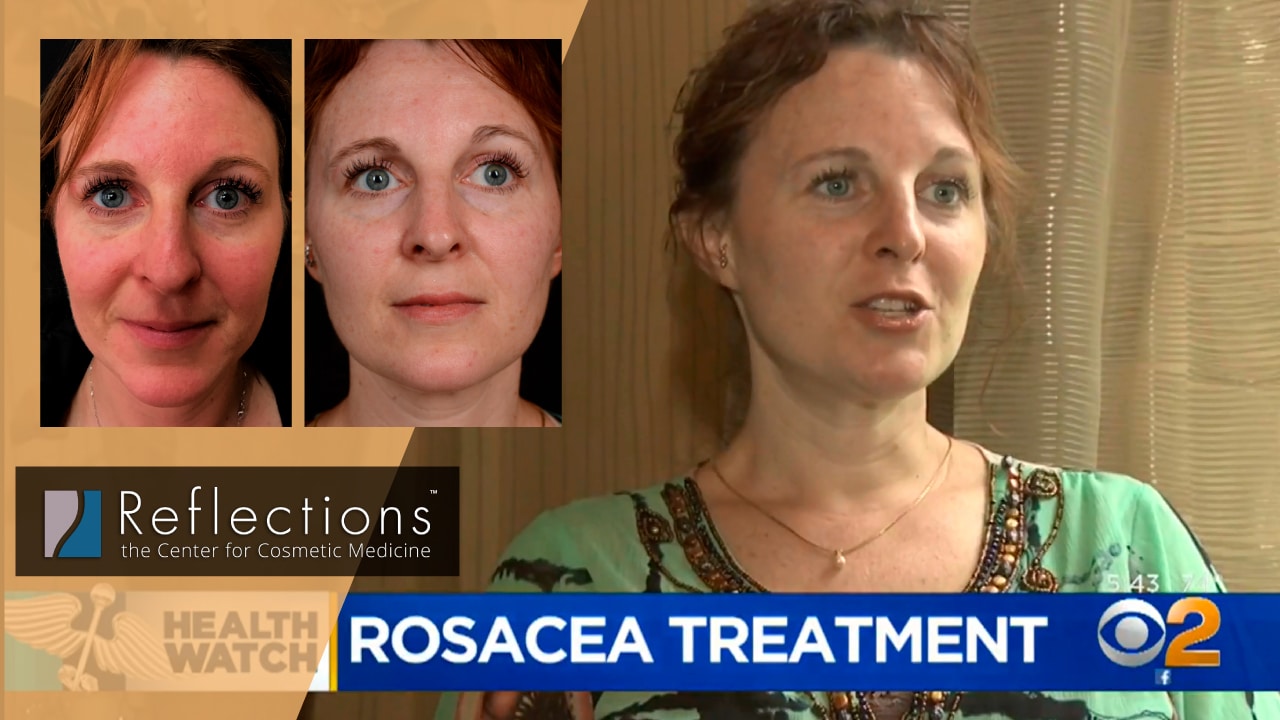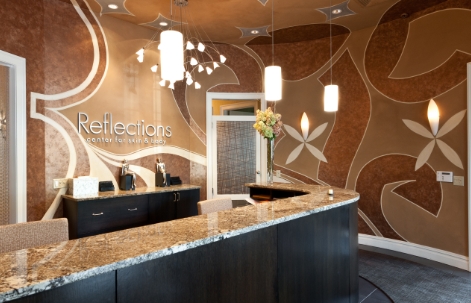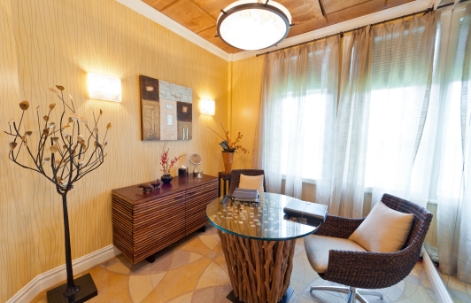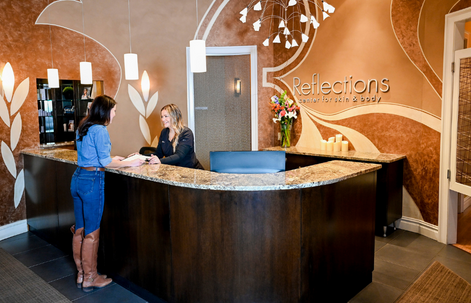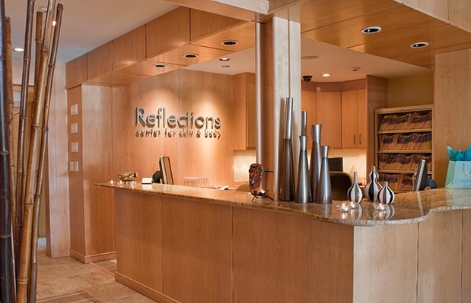Does rosacea make you hold back in work or social situations? Worse yet, does it lead others to make assumptions about you? Rosacea patients are often embarrassed when friends joke that their red facial skin must be caused by excessive drinking. We know how frustrating and upsetting having rosacea can be. That’s why the Reflections team is thrilled to offer the most effective treatments available for fast results.
Rosacea Treatment Quick Facts
- Industry-leading laser technologies, products, and medications
- The most experienced cosmetic physicians in the New Jersey area
- Customizable treatment packages for your skin’s unique needs
Today’s Best Options for Rosacea Treatment
Traditionally, physicians use prescription medications to manage the symptoms of rosacea with the goal being to minimize the symptoms and prevent as much progression of the disease as possible. Physicians often prescribe topical medicines such as azelaic acid and metronidazole as first-line defenses for the bumps and pimples associated with rosacea. If those don’t work, or rosacea is resistant to normal treatments, a new medicine class was recently introduced which includes the topical agent Soolantra.
Some doctors will prescribe a topical antibiotic, such as metronidazole, which is applied directly to the affected skin. For people with more severe cases, doctors often prescribe an oral (taken by mouth) antibiotic. Tetracycline, minocycline, erythromycin, and doxycycline are the most common antibiotics used to treat rosacea. It typically requires a multi-faceted approach for best results. Often these treatments are combined with prescription medications for fast results that last.

Vbeam Perfecta
Vbeam Perfecta is a pulsed-dye laser that delivers an intense but gentle burst of light to undesirable blood vessels on the surface of the skin, resulting in reduced redness and a more even complexion. Introduced in the 1980s, Vbeam Perfecta is one of the safest and most widely used lasers in aesthetic medicine today and substantially reduces the redness and flushing of rosacea3,4.
Learn More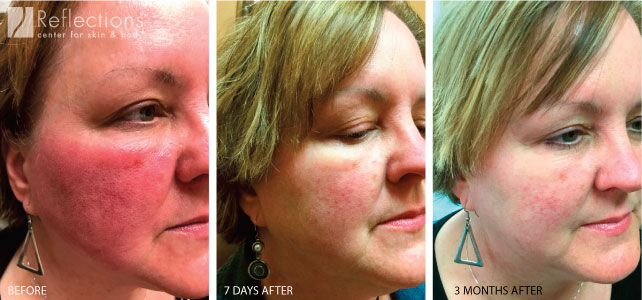
MicroBOTOX
MicroBotox represents a unique and cutting-edge application of Botox to reduce redness associated with rosacea. This treatment uses very fine and superficial microneedling to deliver Botox to the top layers of the skin, where it works to reduce the redness and flushing symptoms of rosacea. This procedure has virtually no downtime, doesn’t require numbing (and is very comfortable), and creates results that last from 3-6 months.
Learn MoreStarlux IPL
Intense Pulsed Light (IPL) therapy is a non-invasive treatment that uses high-intensity pulses of visible light to improve the appearance of rosacea. Our patients are thrilled with the results of this very safe treatment, and because the top layer of skin remains intact, no downtime is required. StarLux IPL is often used in combination with Vbeam Perfecta3.
Learn MoreGentleYAG Laser
The GentleYAG system creates a gentle beam of light that penetrates deeply into the skin, targeting unwanted blood vessels. This Nd:Yag (Yag) laser beam is preceded by a short burst of cooling cryogen spray which protects the outer skin and makes the treatment comfortable. The GentleYAG is especially helpful for deep blood vessels on the nose and can be used in combination with the Vbeam laser or other treatments to dramatically improve the symptoms of rosacea1,2.
Learn More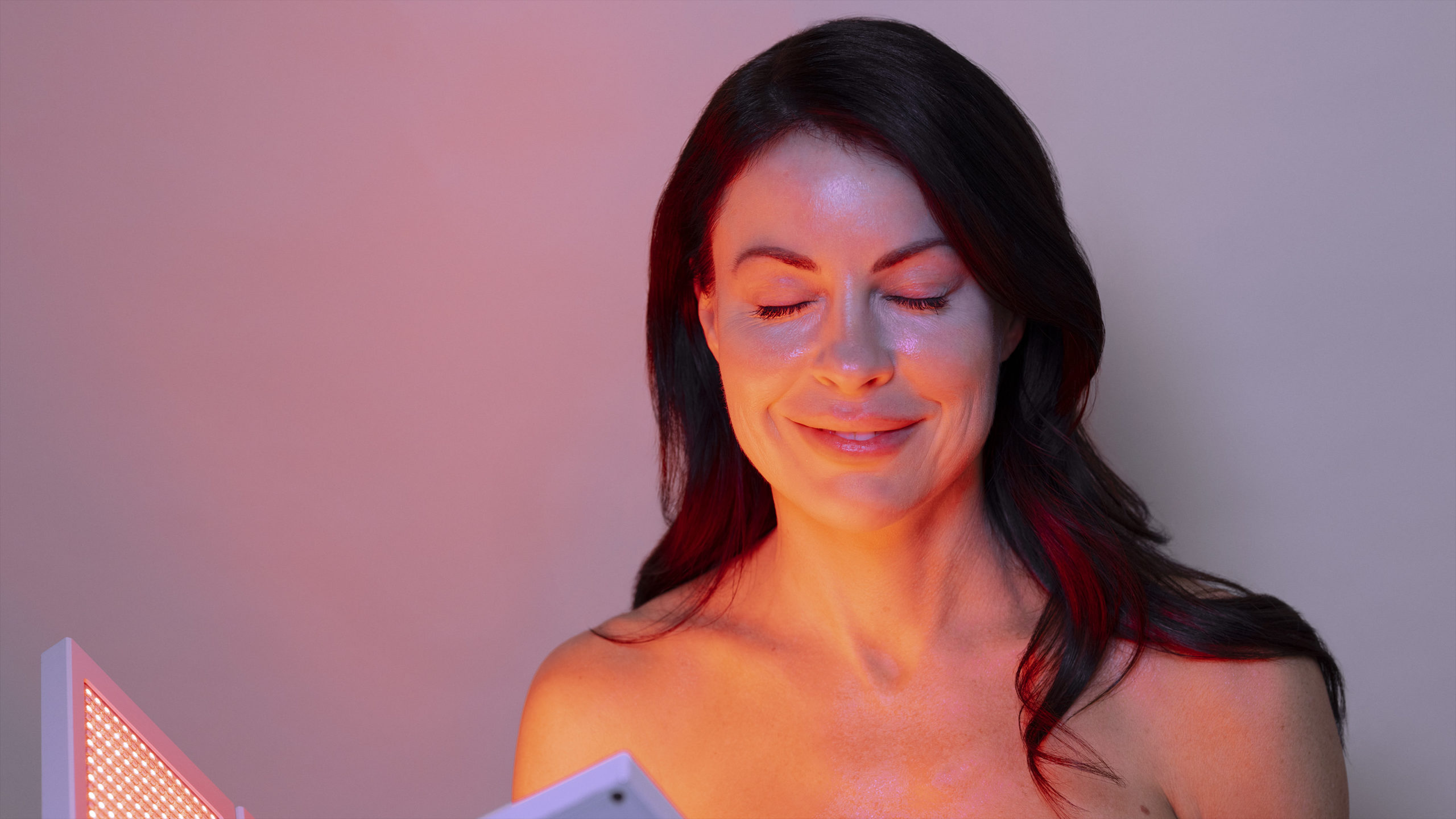
Levulan Photodynamic Therapy (PDT)
During a session of PDT, a topical photosensitizing agent called Levulan is applied to the skin and then activated with specialized lasers and light sources. This treatment is non-invasive and produces impressive results1.
Learn More
Skin Classic High-Frequency Radiofrequency
Skin Classic is a unique application of radiofrequency energy that can be used to very precisely treat spider veins. This energy closes up the fine red telangiectasia without damaging the surrounding tissues.
CO2 Laser Skin Resurfacing
CO2 Laser Skin Resurfacing provides the most significant results for the most severe types of rosacea, including rhinophyma. This laser treatment completely resurfaces the skin, creating a very noticeable improvement in a single treatment.
Learn MoreSkin Care Regimen
An excellent and consistent skincare routine is very important for rosacea patients, especially after laser treatments. Essentials M.D. is a comprehensive line of prescription-only skincare products put together exclusively by the team of cosmetic physicians at Reflections. Our best-in-class skin care program is designed to treat specific conditions and help our patients look their very best every day.
Learn More
Prescription Medications Used For Treating Rosacea
The keys to treating facial flushing are to reduce the dilated blood vessels with laser technology and inhibit the body’s tendency to flush with medicines such as Mirvaso and Rhofade. This combination approach yields the best and most long-lasting results, in our experience.
| Treatment | Cost | Invasiveness | Downtime | How it Works |
|---|---|---|---|---|
| Vbeam Lasers (Perfecta and Prima) | $300 - $450 Per treatment. Multiple sessions are recommended. Reduced package pricing is available | Medium intensity laser. Numbing cream used | Redness and mild swelling for a few days after treatment | The laser targets small and large blood vessels and reduces inflammation. Most popular laser for rosacea |
| IPL (Starlux Intense Pulsed Light Therapy) | $300 - $450 per treatment. Multiple sessions are recommended. Reduced package pricing is available | Gentle pulsed light treatment. No numbing needed | Mild redness for a few days | Pulsed light device targets small and medium-sized blood vessels giving rise to redness in the skin |
| Microbotox (Micro-Injected Botox) | $350 - $700 per treatment. Multiple sessions are recommended. Reduced package pricing is available | Gentle microneedling-based delivery. No numbing needed | No downtime. Some redness but very short-lived | Botox reduces overactive capillaries near skin's surface. Helps with redness and flushing |
| Fractional Co2 (for Rhinophyma) | $750+ per treatment. Multiple sessions are recommended. Reduced package pricing is available | Aggressive fractional laser. Numbing cream used | Expect some pinpoint bleeding during treatment and swelling and redness (and possible scabbing and crusting) for 7 days after | This laser reduces layers of the skin that have grown abnormally, revealing a new nose with slimmer contours and less redness - this treatment is invasive, but it's one of the few options that treat this very difficult symptom of rosacea. |
Prescription Medications |
Varies depending upon your insurance coverage and pharmacy pricing | Topical or oral regimens. Over-the-counter or prescription | No downtime | Many patients will benefit from the combination of topical or oral regimens with laser therapy; our doctors prescribe medication for their patients |

View More Rosacea Treatment Before & After Images
More Before & Afters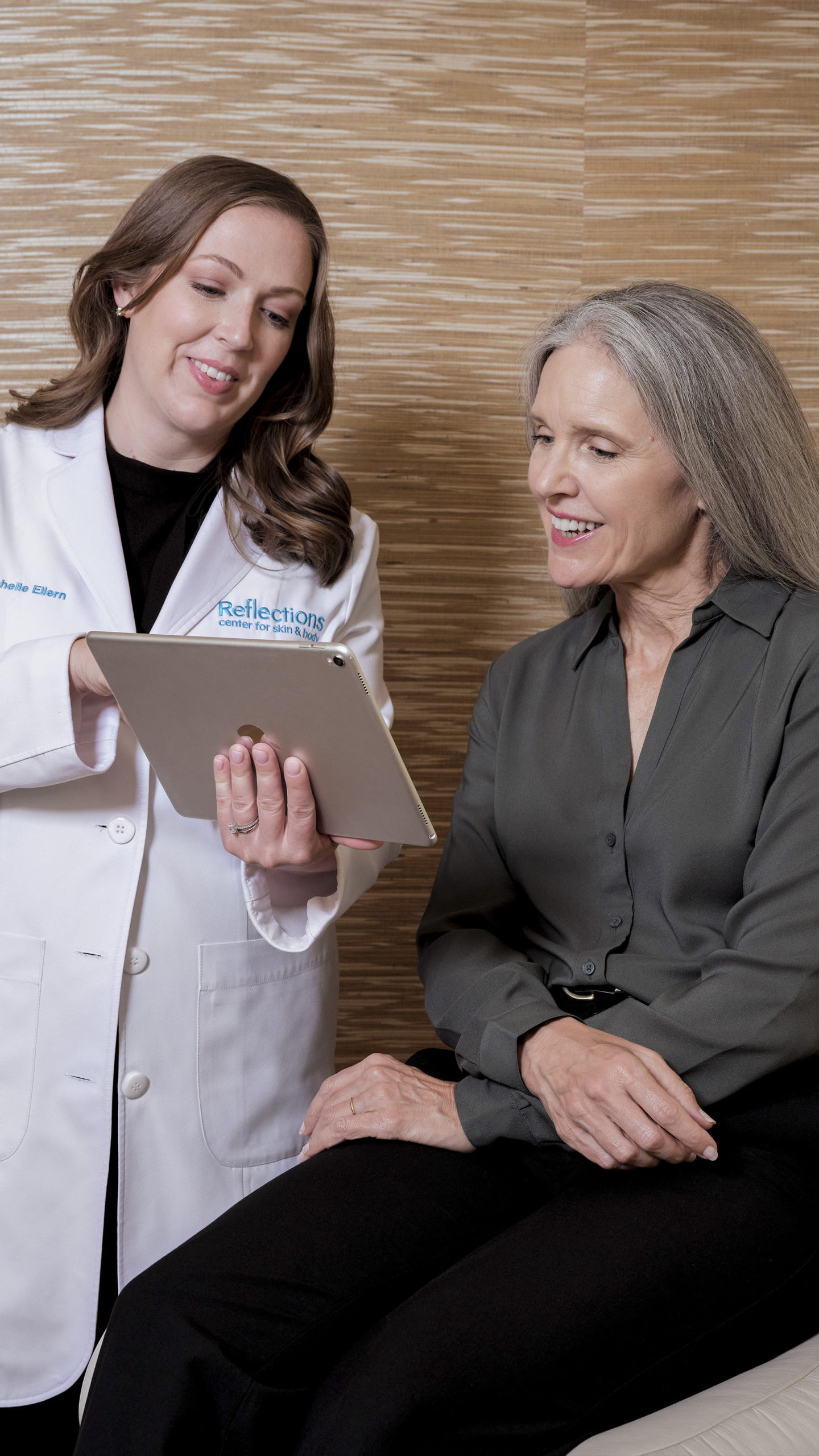

Why Choose Reflections Center for Rosacea Treatment
Rosacea can be painful and frustrating, especially because there are many treatments available and each person’s skin responds to these treatments differently. At Reflections Center, we have many treatments available that are often used in combination to help each patient find their perfect treatment. Our team of plastic surgeons and cosmetic physicians works together, combining each of our specialties into an effective treatment plan. You will only receive treatment from a board-certified physician with extensive experience using lasers so you can always be sure you are receiving safe treatment.
Schedule a Complimentary Consultation
Consultations at Reflections Center are free because we want our patients to have the time they need to sit down one-on-one with a physician and discuss their concerns, lifestyle, and goals. During this consultation, a treatment plan will be created with those goals in mind and the advice of your provider.
With Reflections’ approach to rosacea treatment and management, we make sure you receive an exceptional level of care and the best results possible. Best of all, rosacea treatment will give you new confidence when you’re out and about, knowing everyone can see the real you.
Our Doctors on TV & in Magazines Talking About Rosacea Treatment
View more of our coverage on rosacea treatment
View All Media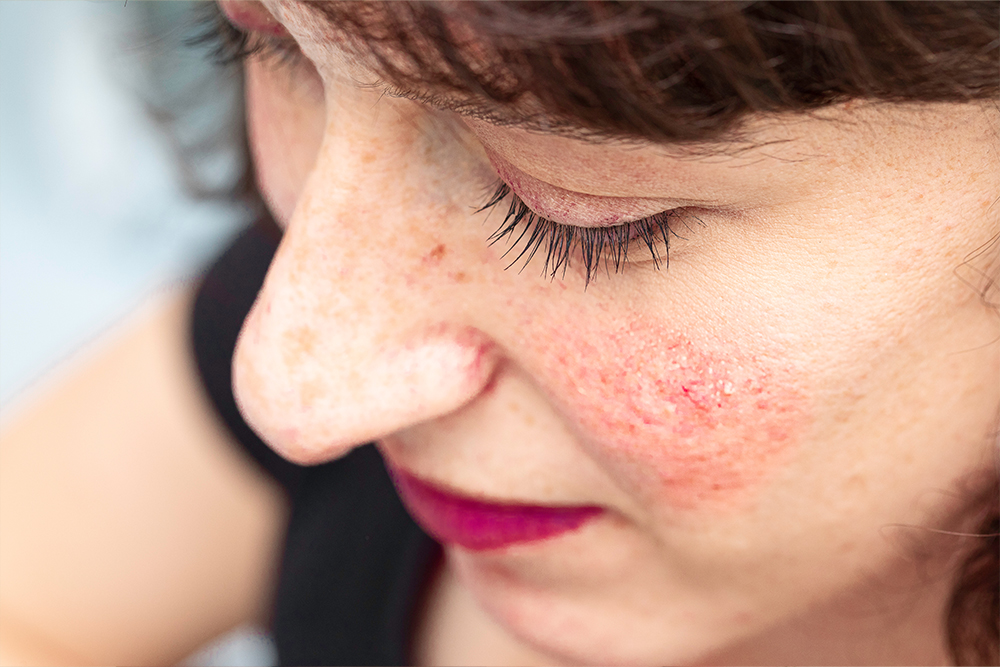
Blog
How Microbotox Can Help Rosacea and Facial Redness
Because our culture admires a rosy blush to the cheeks, rosacea, a chronic...
Read More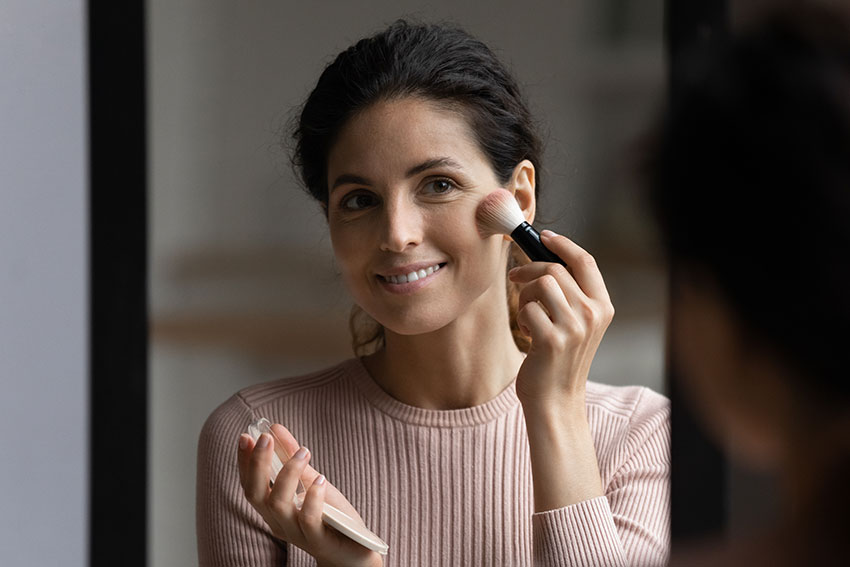
Blog
Laser Treatment for Rosacea: What is It and How Does It Help?
Pink cheeks are a sign of youth and beauty, which is why so many makeup...
Read More
Blog
Rosacea patients may want to include facial rejuvenation in their rites of spring
Each year, as the weather gets warmer, spring cleaning mania takes over many a...
Read MoreFrequently Asked Questions About Rosacea Treatment
- How can I make rosacea treatment results last?
The papules and pustules symptomatic of rosacea may respond quickly to prescription medications, but the redness and flushing are less likely to improve without other types of therapies. Rosacea is a chronic condition and requires ongoing management following treatment. Many patients find it helpful to avoid certain “triggers” such as sun exposure, certain foods, or alcohol, and to follow an effective skin care regimen including sunblock, gentle cleansing, and moisturizing.
Want to learn more about Rosacea triggers and symptoms? Click here to visit our Rosacea Condition Page.
- How much does rosacea treatment cost?
Pricing for rosacea treatment varies by the technology used, and overall cost of treatment will vary by the severity of your symptoms and the number of treatments you require. However, the range of cost per treatment session for the targeted treatments above typically ranges from $250-$450, depending on the technologies used and the size of the area treated, with one exception – CO2 Laser skin resurfacing (generally used only in the most severe cases) is much more expensive, at $2500 or more per treatment. The tradeoff is that this laser provides a very substantial improvement for the most severe cases of rosacea in a single treatment. Your complimentary rosacea consultation will include an exact price quote and a detailed treatment plan.
- How much downtime do these treatments have?
When it comes to downtime for rosacea treatment, we have to clarify what that means. In terms of taking time off from work or social events, almost all of these treatments have no downtime whatsoever (except the CO2 Laser treatments which are really reserved for the most severe cases). MicroBotox, Skin Classic, IPL, GentleYag, and Vbeam Perfecta, the most commonly used rosacea treatments, can leave some redness for a few hours and while your skin is red and sensitive, so we ask that you not reapply makeup or skincare products. However, that redness is almost always gone after an hour or two. PDT can vary in intensity based on the needs of the individual patient, but usually, redness does not persist after 24 hours of our rosacea treatments. You can find much more detailed information about the downtime of each of these treatments by clicking on their titles above and visiting their information pages on our website.
- What type of rosacea treatment will work best?
Every patient is different. The severity and type of rosacea varies by patient, as does the individual’s triggers and response to certain treatments. This is why treating rosacea effectively can take some trial-and-error, even with the best physicians. Our physicians have experience working with patients who are resistant to standard treatment protocols, and that means we have the most knowledge about how to remove redness and prevent flare-ups in patients who have failed with prescription medications, dietary changes, and other at-home remedies. We do recommend patients try these options, which are generally covered by insurance, before coming to see us for Botox, lasers, and other treatment options that are not covered by health insurance.
That having been said, the best treatment for your rosacea is going to be unique to you and that’s why our consultations are complimentary because we believe every patient has the right to the information they need in order to make the best choices about their treatment and care.
- How can I treat rosacea at home?
It’s unlikely your flare-ups will resolve without interventional treatment, but once you have cleared up any flare-ups, it’s important you work to prevent future flare-ups, and that can be done through the treatment of your rosacea at home with:
- Wearing sunscreen (sunlight is a trigger for many, and sunburn is certainly going to create more broken blood vessels and red spots)
- Avoiding triggers like red wine, certain skincare products (that produce a stinging sensation), and anything that causes your skin to flush
- Using any and all prescribed treatments consistently
If you are dealing with a current flare-up, please contact us. We can help you develop a plan to reduce your current symptoms and help you maintain those results.
- I have cleared up most of the redness and bumps from my rosacea, but I have red spider veins that just aren't going away. What can I do?
This is very common because those red spider veins are broken capillaries, and they are too deep and too big to be treated by anything other than a laser or radiofrequency treatment (i.e. they’re not able to be treated by your medications or skincare).
For those, generally, we use Vbeam, which is a pulse-dyed laser that is specifically attracted to red pigment. It works very well to permanently remove these visible blood vessels (telangiectasia). Most can be removed in a single treatment, but some bigger vessels will require a few treatments to completely remove. We can give you an idea of what the treatment plan will look like for you during your free consultation with the doctor. The good news is Vbeam laser is very affordable and produces substantial results for rosacea sufferers.

Dr. Mitchell Chasin is a Cosmetic & Laser Physician at Reflections Center. Dr. Chasin believes strongly that the best cosmetic physicians are those who are dedicated to mastering their craft through continuing education and collaboration with the industry’s top doctors.






